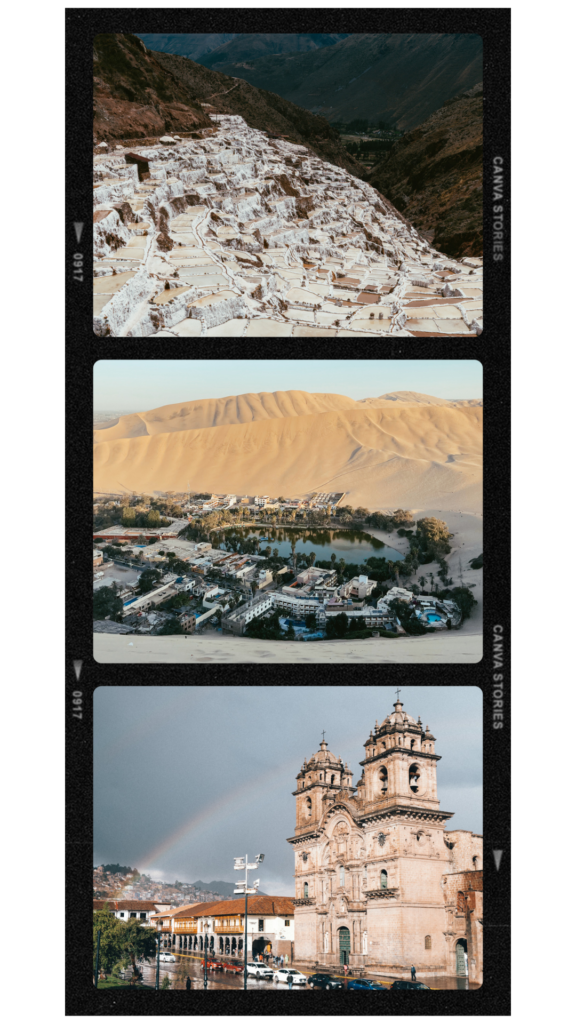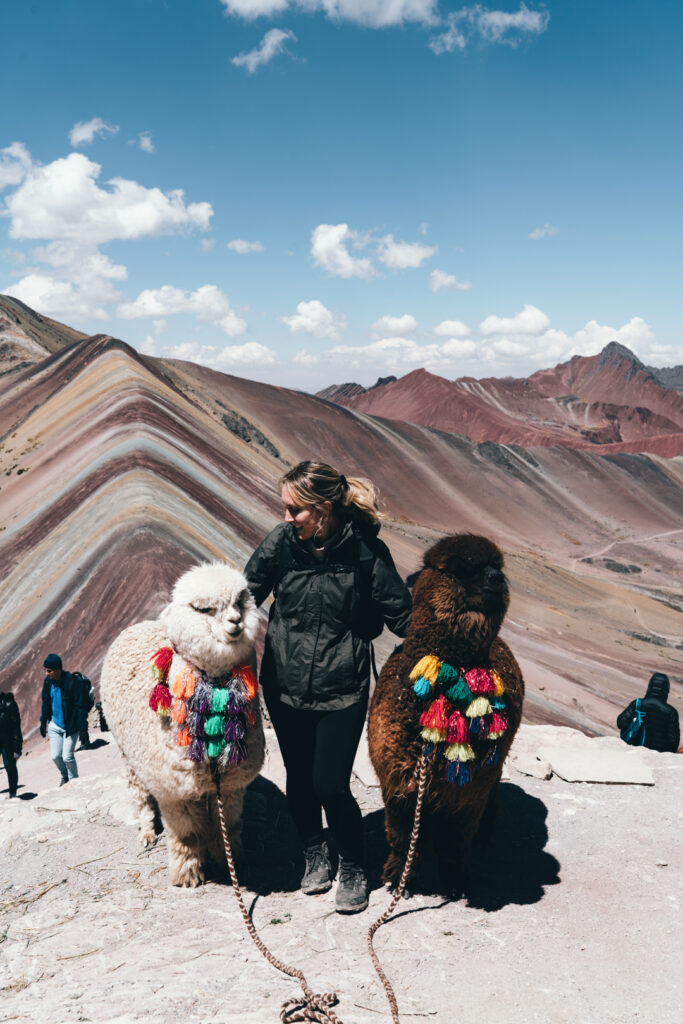The Different Ways to Visit Machu Picchu Explained
Visiting Machu Picchu, one of the 7 new wonders of the world, is practically on everyone’s bucket list. But what...
*Disclaimer: this page includes affiliate links and I may receive a small commission at no additional cost to you. By using my links you’re merely supporting what I love to do: write this blog! I only recommend products/companies that I use myself.
Additionally, World Nomads provides travel insurance for travelers in over 100 countries. As an affiliate, I receive a fee when you get a quote from World Nomads using this link. I do not represent World Nomads. This is information only and not a recommendation to buy travel insurance.

Peru is a transformative destination to visit, full of original Inca architecture and pretty much every landscape you can imagine. Often said to have the best food in South America, after a visit to Peru you’ll long for the citrus ceviche, flavorful meat, and fresh fruit juice from the markets.
Cusco and the Sacred Valley where Machu Picchu towers above, are some of the most famous destinations. However, there’s much more to experience such as Huaraz for alpine views, Arequipa for wandering the most beautiful Peruvian city (in my humble opinion), Lima for foodie tours, Mancora for surfers, and Huacachina for sand boarding.
Traveler’s will especially love the rich culture of Peru, the overwhelming possibility for adventure, the well organized tourism infrastructure, and the welcoming traveler community.
Peru is one of the best solo travel destinations in South America for several reasons.
First, it’s generally safe and well-traveled so you won’t need to worry although you should always follow general safety precautions and the ones listed below specific to Peru.
It’s also extremely easy to meet other travelers here if you wish. Otherwise, there’s many activities you can easily do on your own or by joining a group tour. Lastly, Peru is objectively considered an affordable destination especially for those converting from USD. Read more about the money in Peru below.


The best time to visit Peru is during dry season which is May to October. It’s sunnier and ideal weather for trekking, although you’ll still experience chilly nights especially at high altitude.
The only caveat is that it will of course be more crowded and more expensive.
It is possible to go during off-season to avoid this, but if you’re doing a lot of trekking and want to ensure as much as possible clear views than you might not want to risk it. Instead, you could make a compromise and go during shoulder seasons (April & November).
The official language of Peru is Spanish.
English is not widely spoke in Peru generally, so you should brush up on basic phrases. However, because it is a popular destination for international travelers you’ll find plenty of English speaking tour guides and hostel & hotel lobbies will often have English speaking employees although it shouldn’t be assumed.
Peruvian Sol/Soles
SYMBOL: S/
ABBREVIATION: PEN
CONVERSION: The currency rate is subject to change but at the time of writing (May 2023) 1 USD ~ S/3.65
Peru uses plug types A & C (the same as the U.S. and Europe) and the standard voltage is 220V supply voltage and 60Hz. This is double compared to the U.S. so you should be careful when using hair tools and consider an adapter.
U.S. citizens can travel without a visa to Peru as tourists if staying for less than 90 days. If you’d like to stay longer you can apply to renew for another 90 days. Visa information is subject to changes so make sure to double check US government travel page for Peru here and the Official Peru Tourism webpage here.
To check health advisories and what vaccinations are needed to travel to Peru check the CDC website and the TravelState.gov information page. If you’re traveling to the Amazon, be especially mindful of which vaccines are suggested and talk to your doctor about possibly getting malaria pills.
Before traveling anywhere you can check the U.S. Government Travel Advisory for your own knowledge of the status of the country. Personally, I take it with a grain of salt though, and don’t let it completely determine my travel plans but rather use it to stay advised and take note of emergency numbers.
In general, Peru is a safe place to travel to however you should practice the same safety precautions as you would anywhere. Stay especially mindful of petty theft, especially in Lima since it’s a large city and be extremely cautious in the neighborhoods close to the airport.
Two common scams found in Peru is first, someone asking you to buy milk for their baby (which is often fake) and you me be pick pocketed in the process and second, taxi drivers overcharging significantly. Make sure to determine a price before getting into a taxi, and only use official taxi businesses.
Next, while tourists are typically not in danger from protests, civil unrest in Peru usually means a lot of road closure which can prohibit means of transportation. To avoid getting stuck somewhere I suggest keeping up with the news and checking Peru Travel Facebook groups to stay informed of the status of a situation and possibly consider rescheduling your trip.
Lastly, drinking tap water in Peru is not recommended. I suggest bringing a filtered water bottle which reduces plastic waste and makes it possible to drink water from anywhere (especially helpful while trekking).
Visiting Machu Picchu, one of the 7 new wonders of the world, is practically on everyone’s bucket list. But what...
On a trip to Peru, it’s likely you’re doing at least one multi-day trek whether it’s the Inca Trail, Salkantay,...
Named one of the 10 most beautiful treks in the world, the Cordillera Huayhuash circuit should absolutely be on your...
Punto Union Pass on the Santa Cruz trek If you’ve stumbled upon this blog post it must be that you’ve...